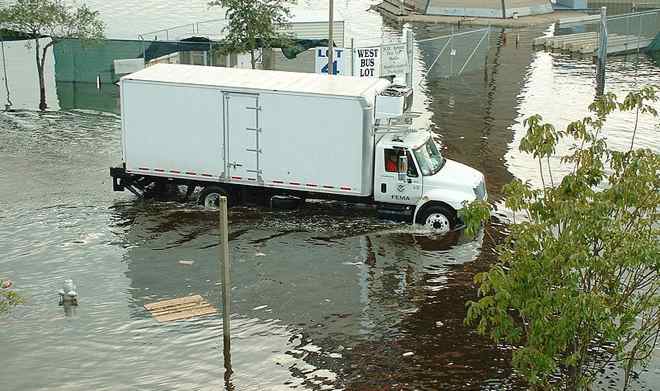This is the second article in a five-part series about emergency food assistance during natural disaster relief.
During the last week of August 2005, the tropical cyclone known as Hurricane Katrina hit the Gulf of Mexico with incredible force, causing almost 2,000 deaths and inflicting environmental damage along the southern United States coastline. Thousands of people were displaced from their homes. Evacuees were sent to the Louisiana Superdome (meant to hold just 800, not the 30,000 that showed up) and the New Orleans Civic Center (which was never intended to serve as an evacuation center, but where 25,000 evacuees sought refuge).
Meeting the urgent need for food and water became a terrible challenge for relief efforts. The system in place at the time was not built for speed. In order for federal aid to be approved for Louisiana, the state had to navigate through a multi-layered web of Federal Emergency Management Agency (FEMA) checkpoints. The press secretary for Louisiana Governor Kathleen Blanco summed up her frustration with the bureaucratic barriers when she told the New York Times “we wanted helicopters, food and water, they wanted to negotiate an organizational chart.”
Even after a catastrophic disaster, help from FEMA only comes after the state government has written a letter to request federal assistance. That letter is first sent to the regional FEMA director, and then passed along to the director of FEMA, then to the Department of Homeland Security, and finally is put in front of the President, who can either deny or approve federal assistance from FEMA. This was the process that was followed after Governor Blanco declared a state of emergency on August 26th.
FEMA, along with the help of 28 federal partners, the Red Cross, and local emergency management crews, is responsible for bringing food and water to the scene of an emergency. However, a PBS Newshour piece revealed that until Hurricane Katrina, FEMA had spent the majority of its budget training for responses to terrorism. The agency suddenly became infamous for its sluggish response to the demand for food supplies and clean water in New Orleans.
The government responded to the criticisms flung at FEMA from every corner of the political map, making quick leadership changes and prompting important policy discussions. Several senators, including Hillary Clinton, pressed for the removal of one layer of the checkpoints to relieve delays in humanitarian relief.
The International Food Aid Information System (INTERFAIS) tracks data on food aid split into a handful of variables. According to INTERFAIS, in 2005 when Hurricane Katrina hit, 64 percent of all global food aid was devoted to emergency aid, a sharp increase from 34 percent in 1996. Since the quake, New Orleans levees and other preventative tools have been made better equipped to handle extreme storms, and 79 percent of homes have been rebuilt. Recovery is still underway in the Gulf region, focused mainly on rebuilding damaged public infrastructure and private property.
The Congressional Research Service reported that several bills meant to ease the disaster relief process were presented to congress as a response to Hurricane Katrina, such as lengthening the period during which disaster rules apply, easing eligibility and benefit rules for food stamps, and ordering an increase in funds for the distribution of foodstuffs and for the Women, Infants and Children Program.













